Do you ever wish you could bring a spare bike tire or two with you on your rides? This way, if yours popped, you wouldn’t be stranded. This seems but a dream, sadly. After all, you can’t lug around a bike tire everywhere you go, right? You could with a folding bike tire, and you wouldn’t have to lug it, either. Wait, what exactly is a folding bike tire?
A folding bike tire can compact and fold down, making it ideal for transporting. Their intended purpose was to assist touring cyclists on long journeys who couldn’t risk being derailed from a popped tire. Today, casual bikers, mountain bikers, and others use these tires all the time.
If you’re intrigued by the concept of the folding bike tire, then you’ve come to the right place. In this article, we’ll talk about this tire in-depth, discussing the materials used, tire price, and how they compare to wire bead road bike tires. We’ll even share links to some of our favorite folding tires, so you don’t want to miss it!
BEST OVERALL
BEST BUDGET
BEST SALE
Model
Maxxis – Minion DHF Tubeless Ready Bicycle Tire | 26 x 2. 3 | Dual, EXO Puncture Protection| Black
Schwalbe Marathon Supreme HS 469 HS Speed Guard Cross/Hybrid Bicycle Tire – Folding – 28 (Black-Reflex – 26 x 1.60)
Continental GatorSkin DuraSkin Tire, 2-Count (Folding, 700 x 25mm), Black
Rating
MSRP
$55.32
$63.54
$104.99
Frame Material
Wheel Size
Item Weight
More Information
Check Amazon’s Price
Check Amazon’s Price
Check Amazon’s Price
BEST OVERALL
Model
Maxxis – Minion DHF Tubeless Ready Bicycle Tire | 26 x 2.3 | Dual, EXO Puncture Protection| Black
Rating
MSRP
$55.32
Frame Material
Wheel Size
Item Weight
More Information
Check Amazon’s Price
BEST BUDGET
Model
Schwalbe Marathon Supreme HS 469 HS Speed Guard Cross/Hybrid Bicycle Tire – Folding – 28 (Black-Reflex – 26 x 1.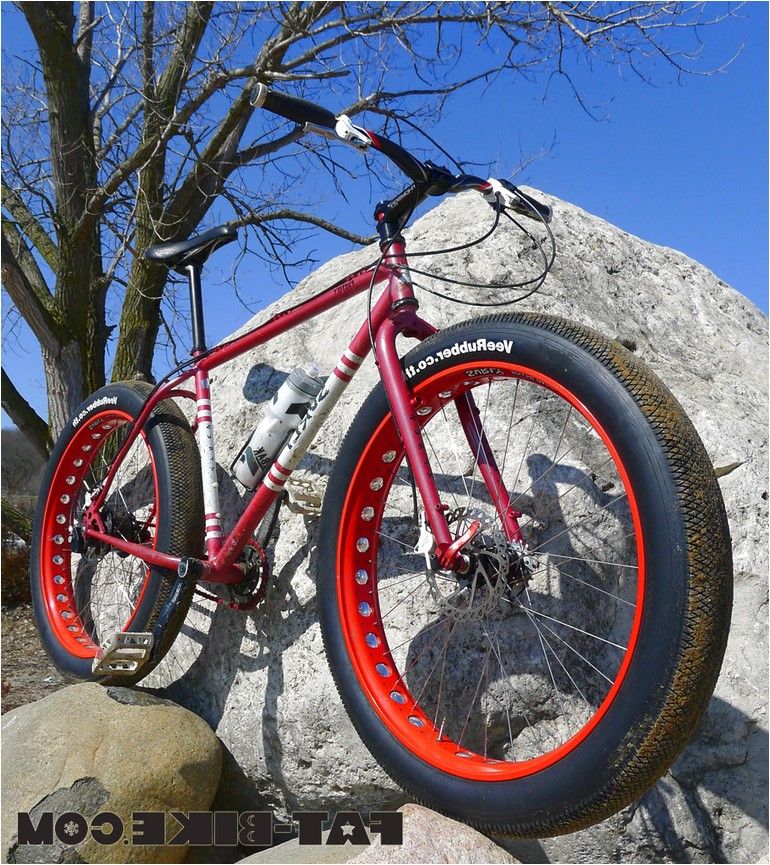 60)
60)
Rating
MSRP
$63.54
Frame Material
Wheel Size
Item Weight
More Information
Check Amazon’s Price
BEST SALE
Model
Continental GatorSkin DuraSkin Tire, 2-Count (Folding, 700 x 25mm), Black
Rating
MSRP
$104.99
Frame Material
Wheel Size
Item Weight
More Information
Check Amazon’s Price
Table of Contents
As we touched on in the intro, a folding bike tire can, well, fold down into a compact, relatively flat shape. To do this, these tires don’t have wire bundles. Instead, they include Kevlar strands bundled up for greater flexibility.
Carrying a folding tire makes your life convenient. You can stash one in your backpack, a purse, and many other bags without them taking up much room. If you commute or ride your bike daily, having a folding tire on your person gives you peace of mind.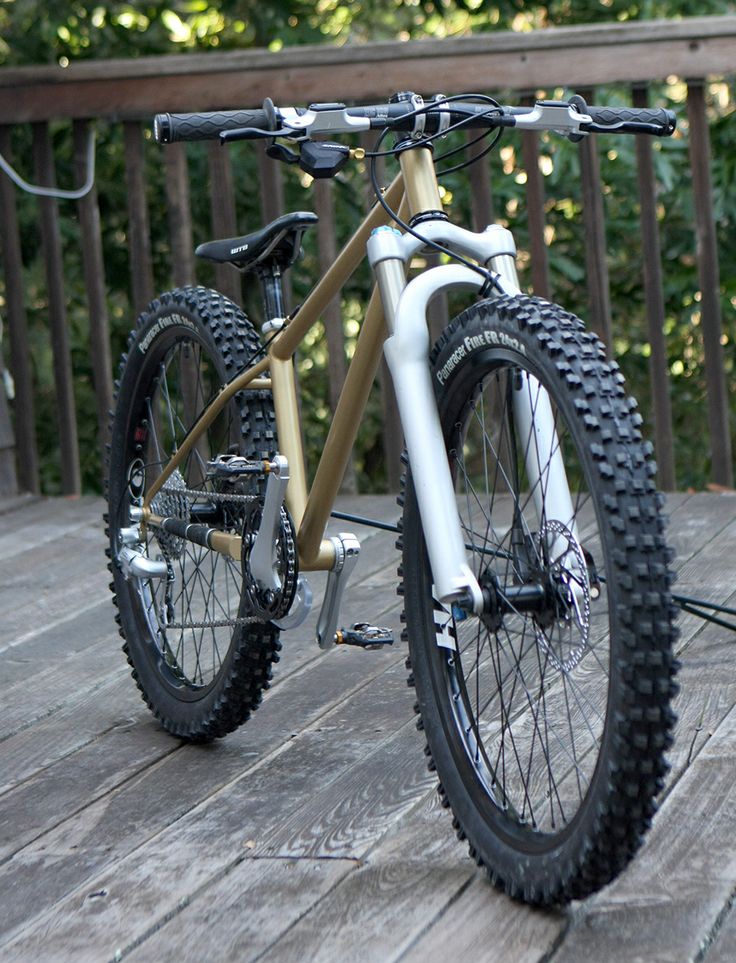 You know that if your tire ever popped, you could just put a folding one on.
You know that if your tire ever popped, you could just put a folding one on.
The malleable rubber compound used for these tires may include a dual-compound tread depending on the manufacturer. That’s because, although they have great traction, the rubber compound doesn’t last as long as traditional, non-folding tires.
Folding tires weigh less than other tires. They often shed 50 to 90 grams of weight with their construction and folding capabilities. Besides their lower weight, folding tires also have a good thread per inch count, aka TPI. The higher the thread density, the better the tires feel when you ride on them.
We love the Continental Gatorskin – see further down this article under ‘The best folding bike tires’ for our thoughts;
See Gatroskins on Amazon
We love the Continental Gatorskin – see below for our thoughts;
You’re quite interested in folding tires, but what about installing them on your bike? How easily do they fit, if at all?
Honestly? Not very easily.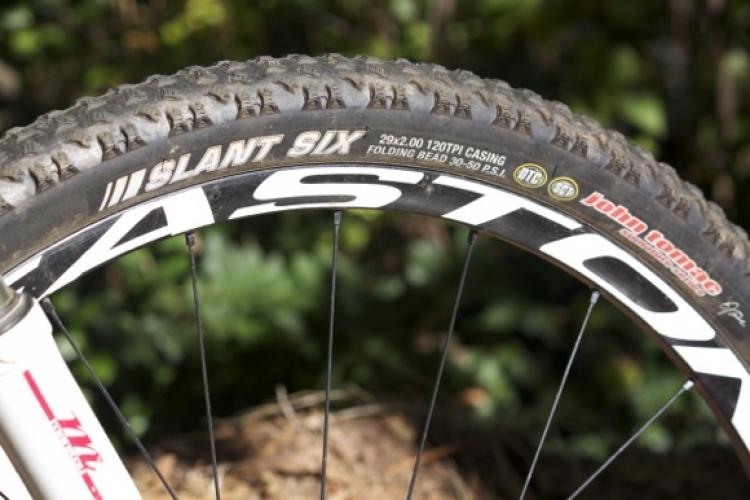 This is one of their biggest disadvantages, admittedly.
This is one of their biggest disadvantages, admittedly.
One factor that may determine how easy of a time you have is the packaging your folding tire comes in. If the manufacturer packages the tire(s) with care, then unfolding it won’t cause a headache. Lazy packaging means the tire comes to you all tangled and disorganized. You’d probably have to flatten your tire before you could even think about installing it on your bike.
Once you’re done with that, you want to use your favorite bike inflation device to put some air into the tire. Now, folding tires have a lower pressure than standard bike tires, so don’t fill too much or they could pop.
When your tire has some shape and fullness, wrap it around your bike tube and rim. It should sit near the valve of the tube, slightly over it. Grab the tire and give it a tug to move it into place as you wrap. Once you’ve got the tire mostly on the bike, you should reach for your tire lever to finish the job. You don’t want to push the tire too much through the rim or the tire wall as you do this.
Now, still with the lever, move the tire’s sidewalls into place one at a time. Sometimes this requires you to release some air so the tire is more pliable. Don’t let too much air go, though!
Great, you did it. Now repeat the process again for the other tire.
If you’re still tempted by folding tires, you’re undoubtedly curious about their price. Do they cost more compared to traditional bike tires? Yes, they do. You may pay as little as $6 more for folding tires, which isn’t bad. Some manufacturers will ramp up the cost to $30 more than an average bike tire price.
Of course, when you review the above information, the price jump does make sense. Folding tires don’t use the same types of materials as traditional bike tires. They’re also a more uncommon tire type, thus inching up their cost even more.
To see the costs of folding bike tires in action, we recommend you keep reading to the last section in this article.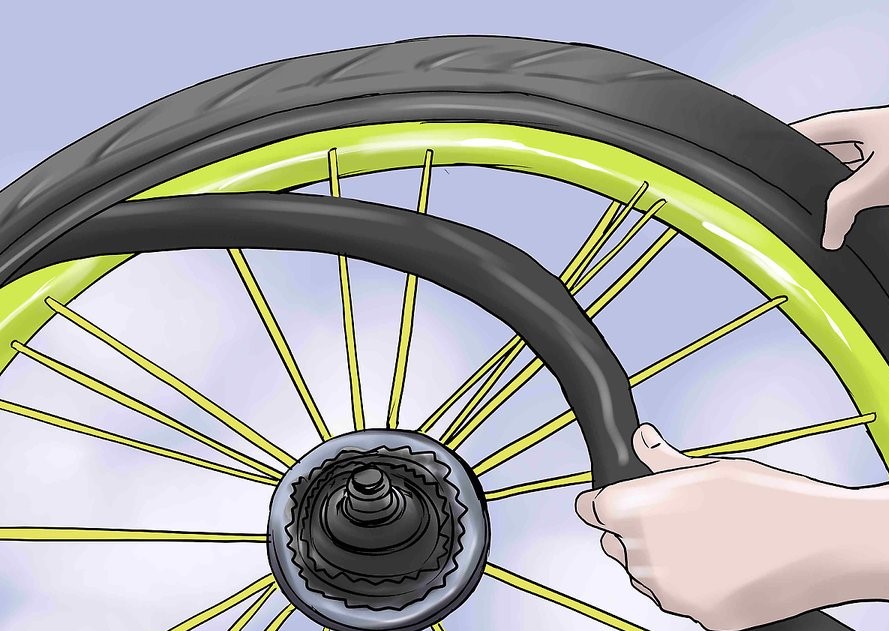 There, we’ll cover some of the top folding tires on the market, including the Continental Gatorskin tire which we highly recommend. You can compare the costs to how much you spend on your current tires to decide if folding tires fit your budget and lifestyle.
There, we’ll cover some of the top folding tires on the market, including the Continental Gatorskin tire which we highly recommend. You can compare the costs to how much you spend on your current tires to decide if folding tires fit your budget and lifestyle.
Speaking of traditional bike tires, have you ever considered what they’re made of? Most of the time, it’s wire bead. The bead includes a steel wire that goes between your bike’s rim and the tire itself.
Now, a bead isn’t like what you’d see on a necklace or bracelet, at least in biking. Instead, it’s a type of cord that’s often housed in fabric. It wraps around the tire’s inner circumference and keeps the rim attached to the tire.
Steel, as we’re sure you know, doesn’t really move all that much. It’s certainly nowhere near as flexible as a folding tire. That’s one key difference between the two tire types: flexibility. You can compress folding tires as necessary, but with wire bead road tires, not so much.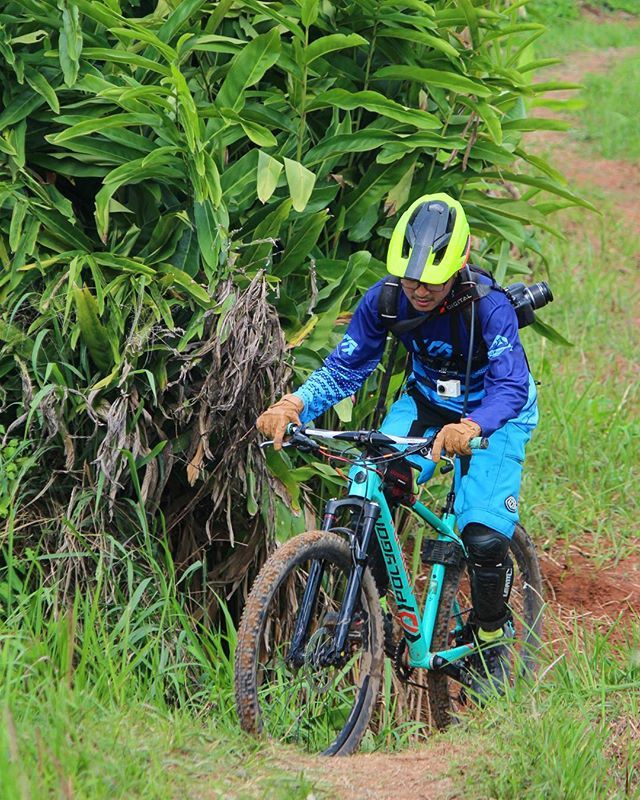 Even though these tires have Kevlar, a type of synthetic fiber, in their construction, they don’t win in the flexibility department. Not by a longshot.
Even though these tires have Kevlar, a type of synthetic fiber, in their construction, they don’t win in the flexibility department. Not by a longshot.
We talked before about the rubber compound used for folding tires. This too has lots of flexibility and softness. It also offers great traction, as mentioned, but it doesn’t last as long as traditional road tires with a standard tread. That’s because these tires use harder rubber that can handle the wear and tear better than soft rubber tires can.
What about the higher TPI that folding tires have? Standard road bike tires can’t compare in a battle of TPI counts. These tires also weigh more than folding bike tires almost every time, so you can’t exactly carry them with you.
It’s not that folding tires are necessarily better than traditional road bike tires or vice-versa. Both have their advantages and disadvantages.
In fact, if you’re curious enough about folding tires, then we recommend you try some.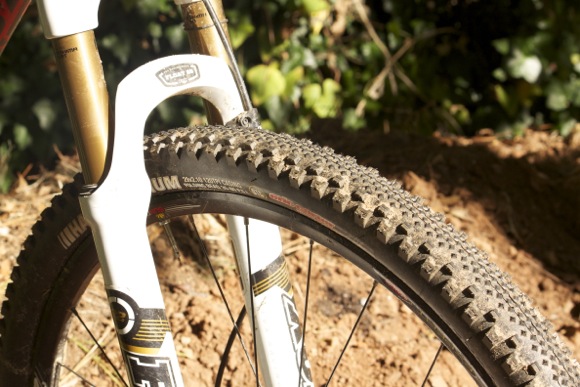 You might find that you like them better than traditional tires. With so many options out there, we’ve rounded up some of the top folding bike tires, all of which you can get on Amazon.
You might find that you like them better than traditional tires. With so many options out there, we’ve rounded up some of the top folding bike tires, all of which you can get on Amazon.
Let’s talk about the specs and details of these tires now.
The EXO Minion tire from Maxxis comes in four sizes: 26 by 2.3 inches, 27.5 by 2.6 inches, 29 by 2.3 inches, and 29 by 2.5 inches. The price varies depending on the size you get.
Each tubeless folding tire includes Maxxis’ DC Dual Compound technology. With Protective Sidewall technology, you can reduce resistance and abrasion damage. The ramped knob and directional design of these tires promote awesome traction and grip.
A beloved product from the Schwalbe brand, the Marathon Supreme weighs just 110 grams. The OneStar Compound included with this tire, a Schwalbe standard is part of the Advanced Triple Compounds from the manufacturer. With this, you get better grip and endurance.
With this, you get better grip and endurance.
As a name like the Marathon Supreme tells you, these folding tires can achieve impressive speed with the HD Speed Guard. You can choose from sizes like 26 by 1.60 inches, 27.5 by 1.60 inches, or 28 by 1.60 inches. The tires cost anywhere from $50 up to $80.
Gatorskin tires have a great reputation for their durability and puncture-proof properties with PolyX Breaker technology. Here at Bicycle Universe, we absolutely love these tires as they really do reduce flats.
This legendary model by Continental has an instant appeal thanks to the DuraSkin sidewalls in a trendy brown hue. Not only do these tires look amazing then, but their polyamide fabric safeguards your tires as you ride. Whether you go on bike tours or just cycle around the neighborhood, your tires take you further with Gatorskin.
They’re some of the more affordable folding bike tires around, depending on the size.
Folding bike tires can compress and fold up, hence their name.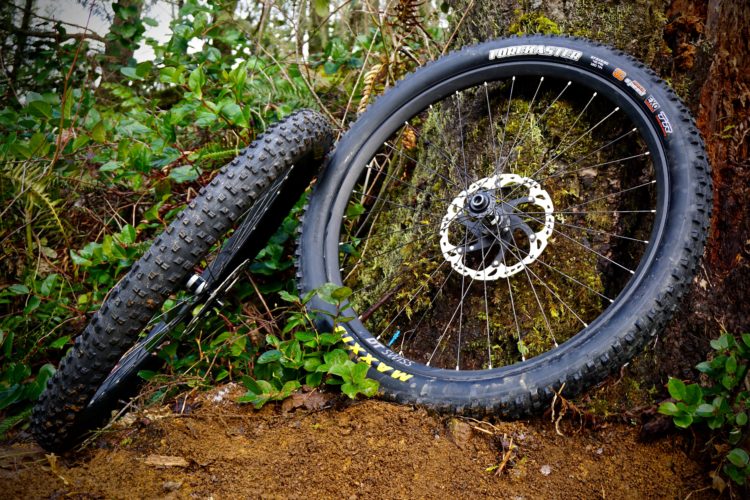 To achieve this, these tires are made from lighter, more flexible materials. They have a higher TPI, lower weight, and better traction than traditional road tires. They also offer great portability. That said, folding tires tend to cost more than most other tire types. Installing them is also a major pain.
To achieve this, these tires are made from lighter, more flexible materials. They have a higher TPI, lower weight, and better traction than traditional road tires. They also offer great portability. That said, folding tires tend to cost more than most other tire types. Installing them is also a major pain.
If you’re considering using folding tires, the suggestions we made in this article should provide a great starting point for you. Good luck!
PS
We have a recommended gear section on our site that talks about tires we like. You can find it here
Biketoworkday is supported by its audience. When you buy through our links, we may earn an affiliate commission. Learn more
Do you plan to get a bike for your next trip? Then, picking the right tire is a crucial task to consider. Since folding tires gained popularity worldwide due to their excellent features, check out this article if you want to know why folding tires are bikers’ favorites today.
Since folding tires gained popularity worldwide due to their excellent features, check out this article if you want to know why folding tires are bikers’ favorites today.
We will first tackle what is a folding bike tire.
Table of Contents
Foldable bicycle tires are ideal if you want to go for constant cross-country travels where high-quality gear is a must.
What makes this tire type extremely popular for casual bikers and mtb bikers is its ability to meet the demands of touring cyclists who want to avoid a popped tire. A biker knows that in case his tire pops, he can quickly put on folding bicycle wheels.
Foldable tires have a high thread per inch count or TPI, which makes rides smoother and more comfortable.
I love how this type of bike wheel gives me peace of mind whenever I go for off-road or cross-country trips.
What Makes a Folding Bike Tire CompactWheels for folding bikes are known to fold into a compact and relatively flat shape. What makes this possible is that these tires do not have wire bundles. They instead use Kevlar strands bundled together to guarantee optimum flexibility.
What are Kevlar strands?
Kevlar is an organic fiber that’s tough and durable, and unlike the wires used in common tires, it is foldable. Because of this advancement in tire engineering, current folding tires are lightweight and more accessible to transport than rigid equivalents.
Folding Tires vs Regular TiresNow that you have an idea what a folding bicycle tire is, we will highlight the differences between folding and regular bike tires. This section is useful for bikers who can’t decide which type to buy.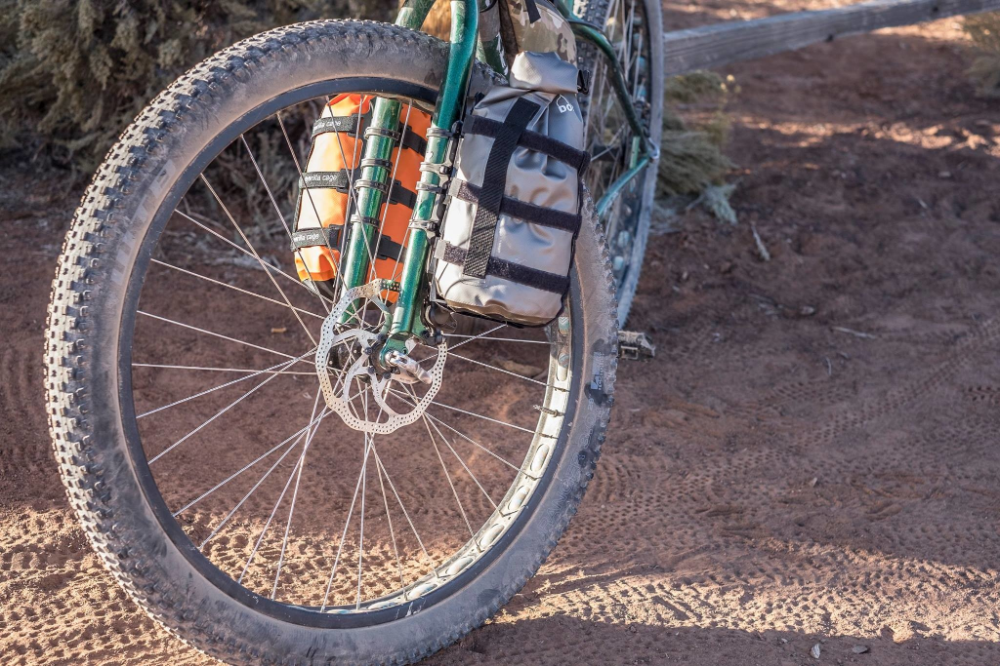
First, as mentioned above, foldable tires use Kevlar strands, which are more bendable than the steel cables used in regular tires.
Another distinction between the two also lies in the weight. Regular tires have a lower TPI than foldable ones, and a lower TPI means a higher weight. Depending on the model, folding tires save about 2 ounces per tire, so they’re suitable for riders who want to pack light.
Third, the prices of the two types are another factor buyers should consider. Because foldable tires are more expensive than regular ones ($6 to 30$ more per item), they are not very budget-friendly, especially if one has multiple bikes.
Last but not the least is the rubber composition. As a rider, I noticed that a softer rubber mix for the tire’s tread is usually incorporated with foldable mountain bike tires. The softer tread grips better on most surfaces but deteriorates faster than conventional tire treads.
That said, it’s still possible to find folding bike tires with adequate longevity.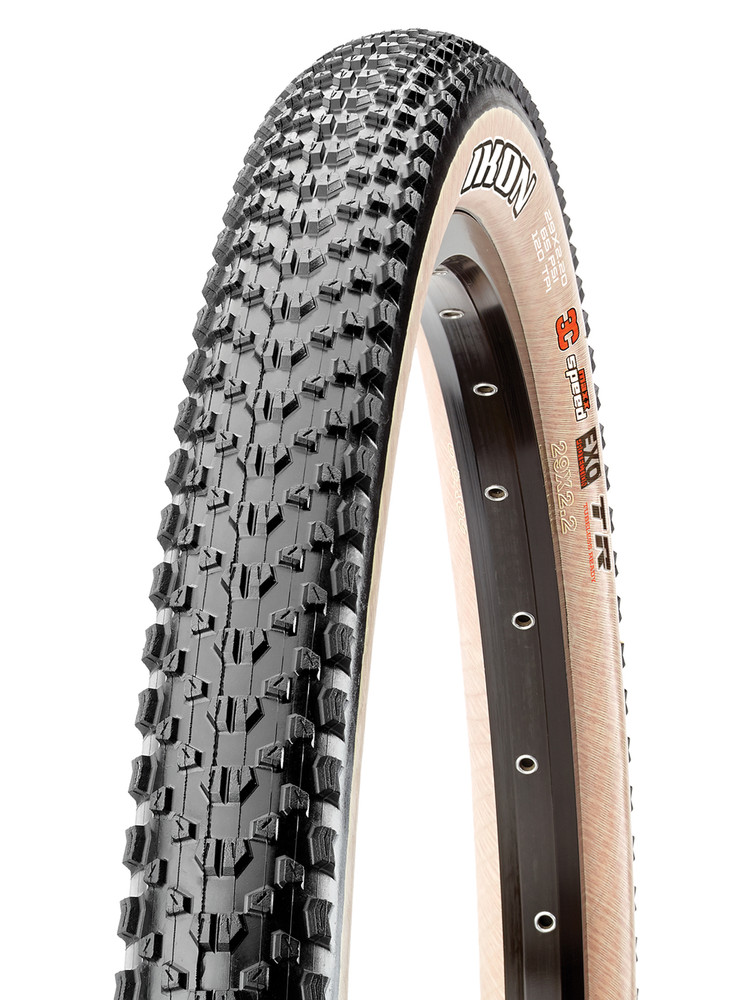 Such models have two or three rubber blends instead of one.
Such models have two or three rubber blends instead of one.
Overall, the choice of folding or regular tires depends entirely on personal preferences. The low weight and easy storage of foldable tires might please long-distance riders, but may not matter to people who only use bikes for short commutes.
For more information about the prices of tires and wheels, please check out this article.
What Bike Types Are Ideal for Folding TiresYou might wonder what bike types are ideal for folding tires. To summarize, you can use a folding tire for road bikes, foldable bikes, hybrids, MTBs, and even e-bikes. They really offer much versatility.
How to Fold a Folding Bicycle TireSuppose you got your folding bike tire, but have troubles packing it. This section is useful for you. You can fold your tire in half twice, or fold it in half once and roll it into a ball. It should then be compact enough for transport.
When to Replace Your Folding Bike TireSince we already know that a folding bike tire is not as durable as a rigid bike tire, it’s a good habit to look for signs of damage to avoid accidents and maintain optimum safety.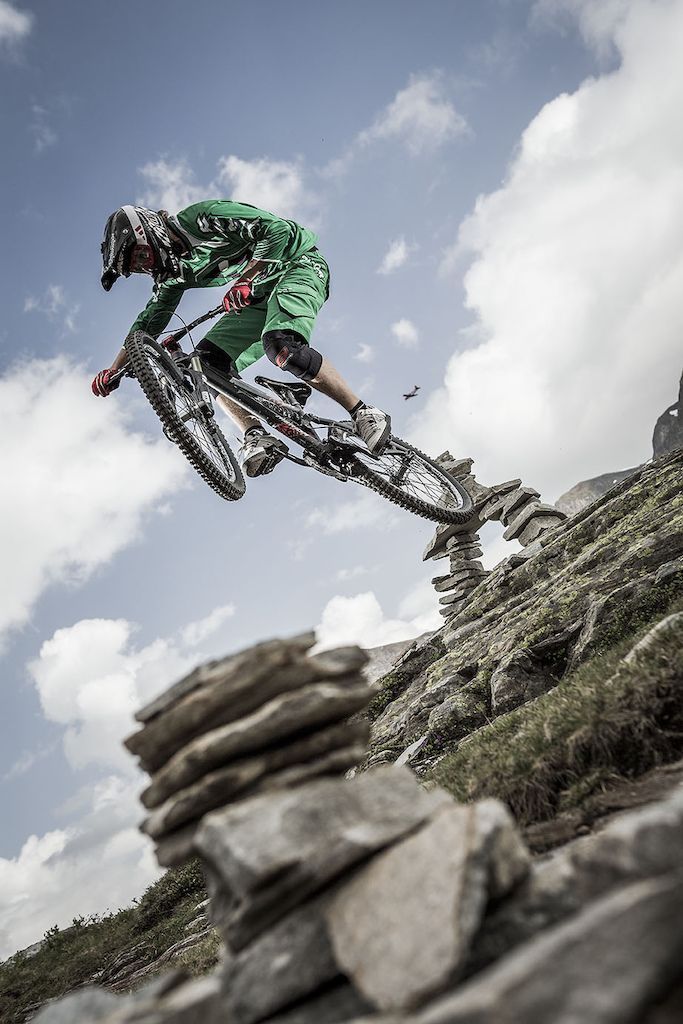 Here are some of the common signs that show your tire needs replacement.
Here are some of the common signs that show your tire needs replacement.
Cuts are the most prominent sign. So, if you notice your tire having one, get it replaced as soon as possible.
The second sign to look for is a bald tread. Take a moment to look at your wheels and see if the wear indicator’s still visible. Overly-worn tires have faded wear indicators; to avoid unwanted accidents, I highly suggest upgrading your bike tires if this is the case.
In general, defects must not be ignored. Always check your tires for faults or irregularities, whether they’re caused by careless manufacturing or usage. Most bike tires are folded when packed, and prolonged bending might cause difficulties. High heat can also weaken rubber tires.
ConclusionSo those are some of the features of a folding bike tire.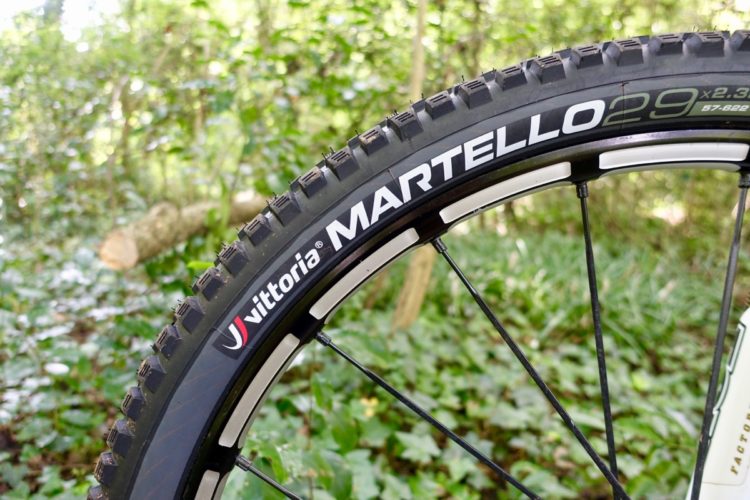 As you can see, knowing what is a folding bike tire can greatly help those who love to travel as they can decide whether to pick or avoid this type of gear.
As you can see, knowing what is a folding bike tire can greatly help those who love to travel as they can decide whether to pick or avoid this type of gear.
Folding tires come with a slew of high-end features. They are made of lighter materials, which gives elite cyclists an edge.
Gary Johnson
“I ride my bike to work for years, but is that enough? Our carelessness towards our surroundings has taken a toll on the environment. And now, everyone is responsible for changes; even the most minor contribution is counted. With this hope and spirit, I started with my partner to establish Biketoworkday to help more individuals commute to their work sites on their bikes.”
Tires are an important part of any bicycle that is in direct contact with the road surface and affects grip and stability.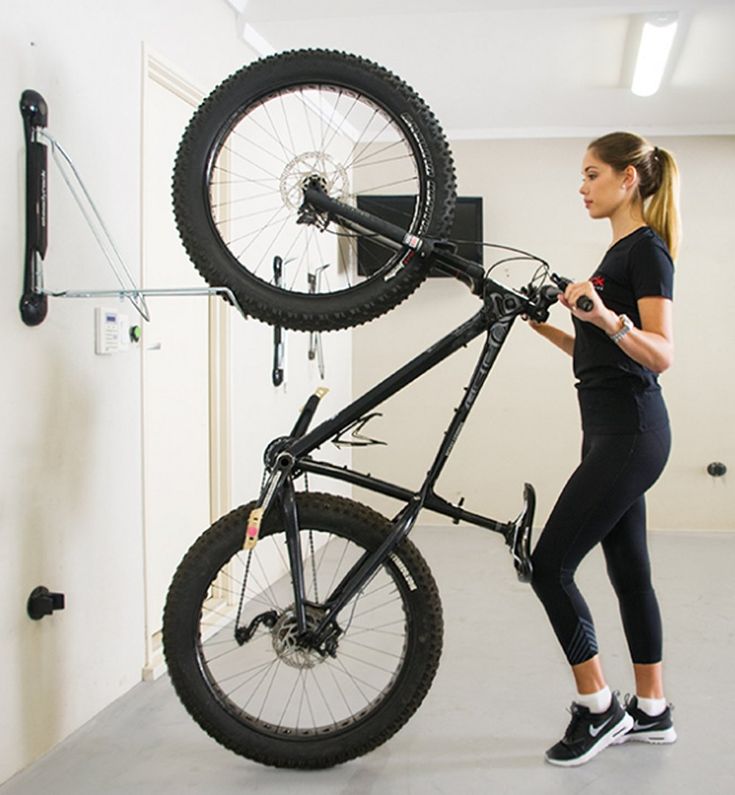
Almost all modern models have tires with internal chambers that are filled inside and inflated with air. The chamber in this case increases the weight of the wheel, but protects against punctures, however, the bike tire is the main part in this system.
Contents:
Anatomy of bicycle tires
How to choose the right size
main types and criteria for choosing bicycle tires
How to choose bicycle covers and what should be paid attention to
TOP-5 bicycle tires
Michelin
Maxxis
Kenda
Continental
the question is, we can say that tires have different parameters, but for each place of riding and bicycle - its own type. However, this spare part also has common characteristics, which primarily relate to the design and anatomy.
On any rubber, you can find a digital and letter designation of the main parameters that one way or another speak about the structure of a bicycle tire from the inside.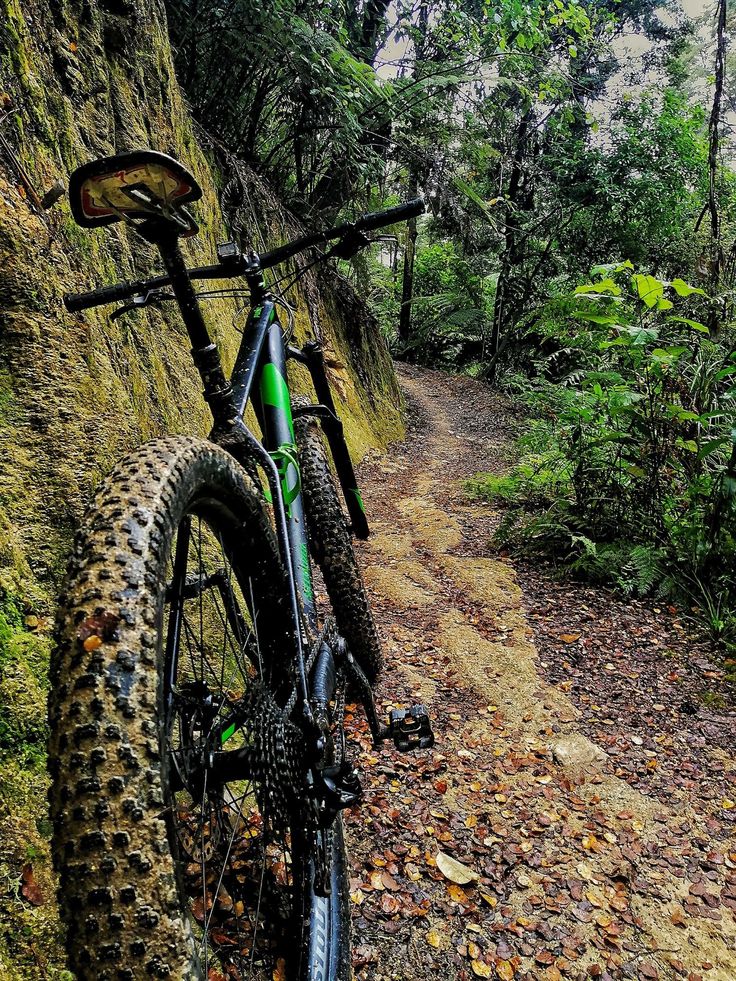
In order to understand them, you need to have basic understanding of its structure and its constituent parts: The depth and pattern of the tread determine how the tire is used. There are two types of treads: Size is the most important characteristic of any tire, and it consists of two parameters - the fit diameter and tire width. So, for classic mountain two-wheelers (one of the most common options) will be the designation 26x2.0, i.e. 26 inches is the diameter of the wheel, and 2 inches (about 54 mm) is its width. This option is suitable for many mountain bikes, fatbikes, urban and touring models. Among other common inch sizes for adults, in addition to 26", alternative larger options are also common at 27.5" (for mountain bikes), 28" (for road and touring models) and 29" (mountain bikes). ). Sizes 24” and below are considered teen or child sizes Please note that tire widths for city bikes or road bikes are given in millimeters when choosing tires, while for city bikes it is in inches, with tenths, but sometimes and vice versa. The inner width of the wheel rim physically limits the width of the bike tire, the space available inside the fork and frame, and for V-brake versions, the space between the brake pads. In fact, the default width of a bicycle tire is larger than its own marking, since in working condition it is also affected by the tread dimensions, pressure and rim width with the seller on the choice of a suitable option. Each bicycle tire is designed with characteristics that allow it to be used in certain conditions. Thus, there are several main types: Here are some tips for choosing the right one that will help you when visiting a bike shop: In the first case, everything is easy to install yourself, and it's inexpensive. Michelin is a brand with over 150 years of history that everyone has heard of. Today it is the largest manufacturer of tires for motorcycles, cars, bicycles, tractors and other vehicles. The production of bicycle tires makes up only a small part of the company's turnover, but their products have long earned the trust of athletes and connoisseurs of quality spare parts. The company's developers also lag behind their competitors by introducing innovative technologies, including Dual Compound - the use of rubber of different densities in different parts of the tire tubeless bike tires Michelin MTB WILDGRIP'R2 26x2,10. Due to the embossed tread, they are reliable when maneuvering, and the side studs maintain excellent grip and do not wear out under loads. The special GUM-X high-density compound included reduces the chance of punctures and cuts. Another famous brand from Germany, with over 100 years of history, which is also famous for its quality bikes of various types. The range today includes several dozen models of tires and tubes, as well as a large selection of equipment for tubeless tires and various accessories for bike care. All Schwalbe products, in order to maximize customer satisfaction, are conditionally divided into several categories: - Evolution Line - PRO level, products that are optimized for a specific use, and all characteristics are of the highest quality. - Performance Line - Tires that combine a versatile tread with minimal weight, but no frills, and at an affordable cost. - Sport Line - high quality sports class used in competitions - Base Line - base-level tires designed for mass consumers. Maxxis, together with the above brands, is one of the leaders in the global and domestic market. It was founded in 1967 in Taiwan, but for Russian cyclists the brand has become known since the 1990s. The range of bicycle products is very wide and includes more than 100 items, of various quality levels and sizes. Of course Maxxis uses unique and innovative technologies in the production of its tires. The pride of the company is the 3C triple compound technology. Mountain bike tires improve braking performance with the use of the 3C principle, and the tread contains silicon to maximize tire durability Kevlar inserts, which significantly increase strength compared to conventional rubber profiles. This technology is typically used on classic 26” openers, although it is also used in other sizes. For example, wear-resistant and durable Maxxis Ikon 29x2,20 Foldable EXO/TR. Another recognized leader in the production of tires for various purposes, including bicycles, also comes from Taiwan - the world capital of the bicycle industry. The manufacturer offers high-quality products for all occasions, at the most affordable cost. Prices for Kenda products are really lower than those of competitors, despite the fact that they are not inferior in quality to competitors. The top model with anti-puncture coating will cost no more than a budget option from a well-known brand. The last brand on our top list is from Germany, all production plants are located there and the inscription “Made in Germany” proudly flaunts on the company's products. However, compliance with high quality also implies a corresponding price tag, which ranges from $30 to $60 for budget options. Race King is one of the most popular tire ranges, but is often used as an all-rounder tire and lives up to that role. All models of the line have reinforced sidewalls, anti-puncture coating and a proprietary tread pattern. Bicycle planetary hub - what's good about it We propose to consider the type of bicycle gear shifting systems, undeservedly forgotten in Russia - the "planetary". A tire is an important part of a bicycle wheel and even a bicycle in general. A lot depends on the tire and it's not just comfort. Road grip, and most importantly safety - this is exactly what the quality of the tire and its right choice affect. The structure of a bicycle tire Modern bicycle tires can be made from two materials - rubber and compound (composite materials). Both materials have their own advantages and disadvantages. Rubber has the best grip, but wears out quickly. The compound is more wear resistant. Rubber is produced by adding special fillers to rubber. The more filler in the rubber, the lower its quality. In addition, rubber in rubber can be natural and artificial. Natural rubber is more expensive to produce, and, accordingly, more expensive rubber is obtained from it. But rubber with natural rubber is more wear resistant. In order to independently and at the same time choose the right rubber, you need to know its internal structure. In the picture below you can see the main elements of a bicycle tire: tread , carcass (cord), beads and bead cable . Types of bicycle tires If you ride on hard flat surfaces, slicks are the best choice. Due to their smooth surface, you can accelerate to the highest possible speed with minimal effort. This is the main advantage of slicks. It is intended for driving only on asphalt, it is completely devoid of any lugs. The maximum that can be is a weak pattern, in order to provide additional grip with asphalt. Most slick models have a small width and, accordingly, a smaller contact patch. The slick needs to be pumped up to a higher pressure. Light slicks, installed even on a not the lightest mountain bike, will significantly improve its driving performance. You will feel it from the first meters of movement, and after 100 kilometers you will simply thank yourself for your choice. If you ride on different surfaces, such as asphalt, gravel, concrete, semi slicks are the best choice. The central part of the tire is a flat track with a width of 10 to 20 mm, and the side parts are spikes that do not look directly into the asphalt, but to the outside, and at the same time are closer to the center of the wheel. Off-road riding will require mountain bike tires that provide traction in a wide variety of conditions. If you drive mainly on one type of surface, then this will be the best choice. They can be suitable for cross-country, touring, and extreme disciplines. Riding on pavement with "toothed" tires requires more energy to propel your bike than if you ride on road tires. As a result, you lose speed and get tired faster. The teeth of such mountain tires do not allow your bike to roll efficiently on asphalt. Since the most popular type of bike is a mountain bike (MTB), it is quite logical that it comes with mud tires from the factory. This does not mean that it can only be driven in mud. After all, you see, the tractor can also go along the highway. This composition affects wear resistance, grip and even speed. Expensive models can combine several mixtures at once in the composition - for example, hard in the center - for more speed, and soft at the edges - for better cornering grip.
This composition affects wear resistance, grip and even speed. Expensive models can combine several mixtures at once in the composition - for example, hard in the center - for more speed, and soft at the edges - for better cornering grip.
How to choose the right size 
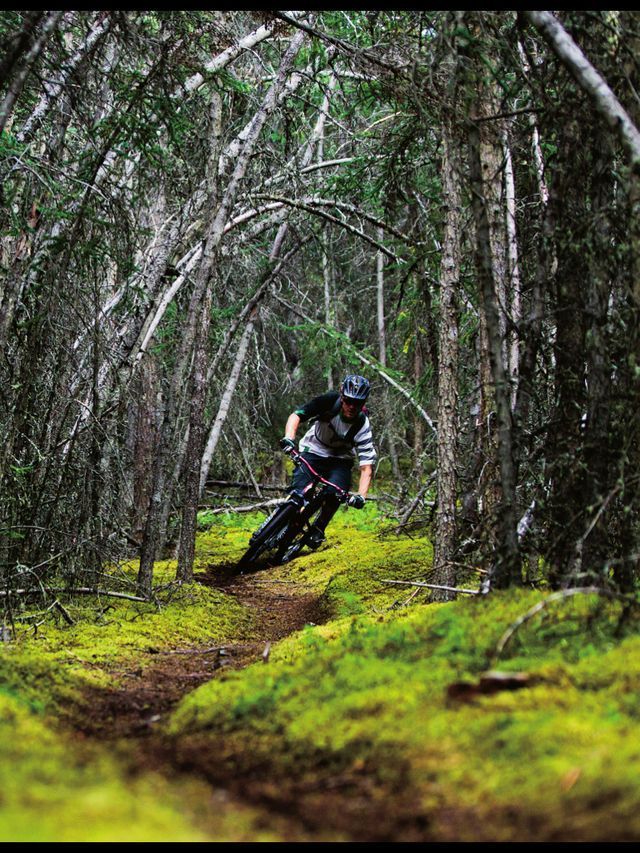
Basic types and selection criteria for bicycle tires
 With long runs on asphalt, the treads will wear out quickly, as they are not designed for city roads.
With long runs on asphalt, the treads will wear out quickly, as they are not designed for city roads.
How to choose tires and what to look out for  In the second case, you will be better protected from punctures, and the wheel itself will weigh a little less.
In the second case, you will be better protected from punctures, and the wheel itself will weigh a little less. 
TOP 5 bicycle tire manufacturers
Michelin 
Schwalbe 
Maxxis

Kenda
Continental 
How to choose a quality tire for your riding style.
 When choosing a tire, it is worth considering the time of year, the style of riding and the surface on which you will move most of the time. And the higher the quality of the rubber, the more expensive the tire is.
When choosing a tire, it is worth considering the time of year, the style of riding and the surface on which you will move most of the time. And the higher the quality of the rubber, the more expensive the tire is. 
 On inexpensive tires, the bead has a small amount of nylon threads and a fairly thick layer of rubber. On professional tires, the rubber layer is very thin, but at the same time a very dense layer of nylon threads.
On inexpensive tires, the bead has a small amount of nylon threads and a fairly thick layer of rubber. On professional tires, the rubber layer is very thin, but at the same time a very dense layer of nylon threads.
Bicycle tires are divided into types according to the type of tread. The deeper the tread pattern, the better the grip on any surface (asphalt, dry soil, mud and snow). But the deeper the tread, the higher the rolling resistance, i.e. rubber brakes.
It is precisely because of the rolling resistance that it is necessary to choose the right rubber depending on the road surface.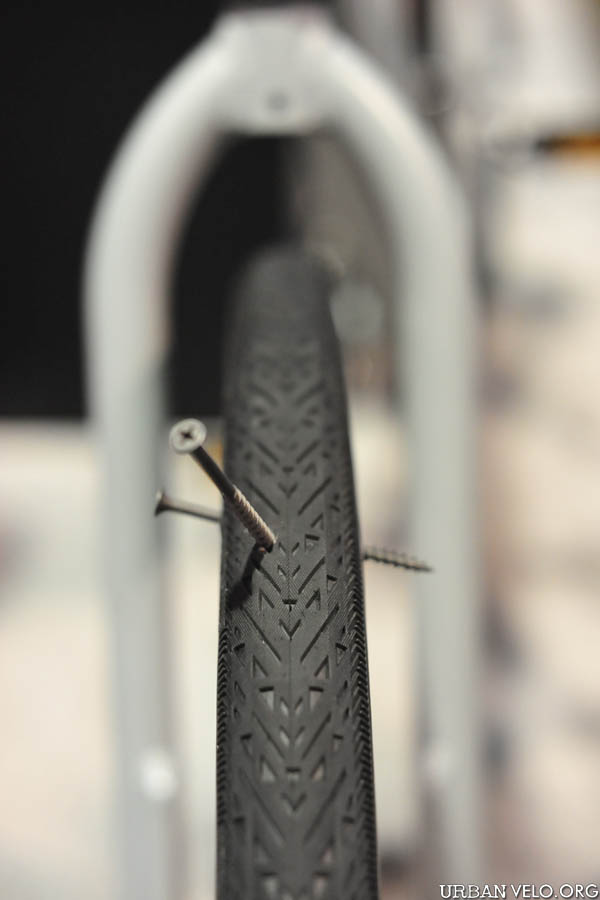
Slicks
Semi slicks 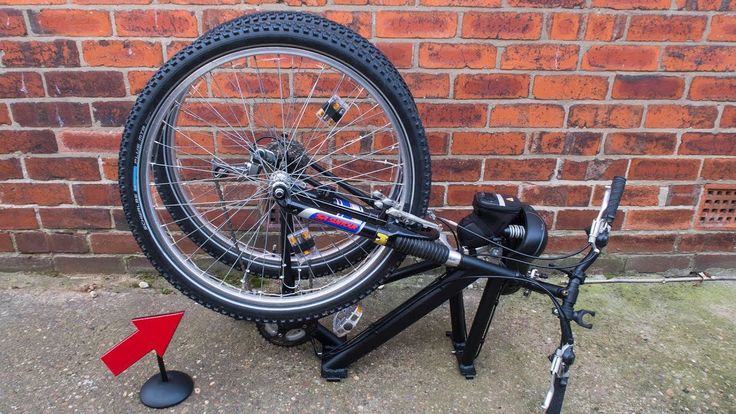 Thanks to this, you can travel everywhere. With a well-inflated wheel, a central flat track comes into contact with the road, which provides a good roll. If the wheel is slightly lowered, then the side spikes are in contact with the road.
Thanks to this, you can travel everywhere. With a well-inflated wheel, a central flat track comes into contact with the road, which provides a good roll. If the wheel is slightly lowered, then the side spikes are in contact with the road.
Mud tires 